Fountain of Neptune: The Untold Secrets
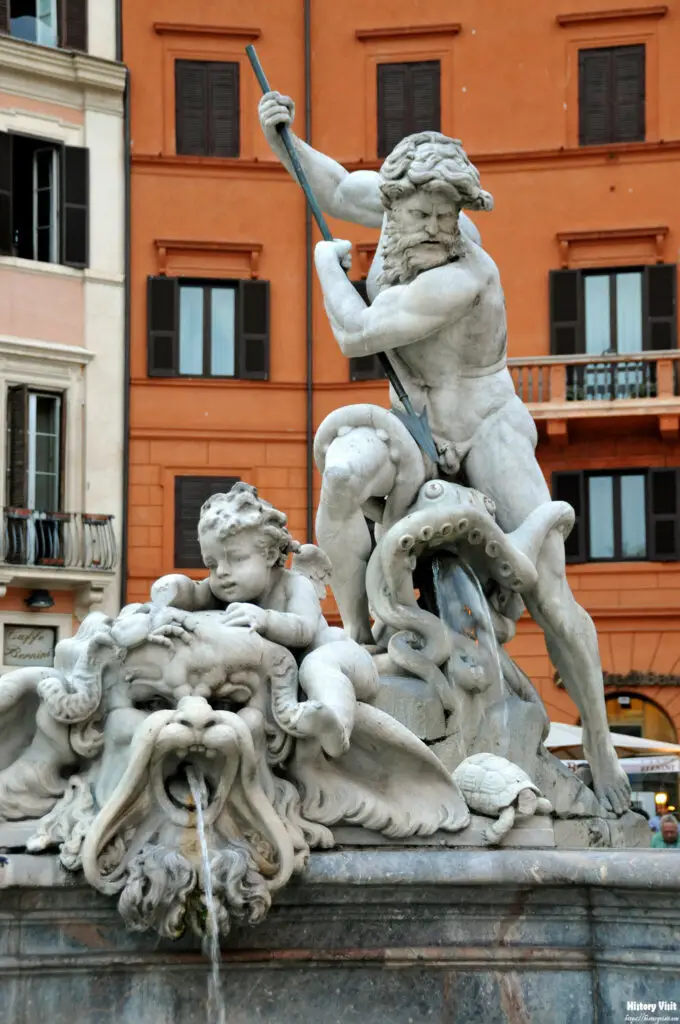
Introduction
The Fountain of Neptune is an iconic symbol of artistic and historical significance. Located in various cities around the world, these fountains represent the power and majesty of Neptune, the Roman god of the sea. The most famous of these is the Fountain of Neptune in Bologna, Italy, designed by Giambologna in the 16th century. This article explores the history, artistic elements, and cultural significance of these majestic fountains.
The creation of the Fountain of Neptune was a monumental task. It involved the collaboration of architects, sculptors, and craftsmen. The fountain’s design reflects the Renaissance ideals of harmony, proportion, and beauty. Each element of the fountain was carefully crafted to create a cohesive and visually stunning work of art.
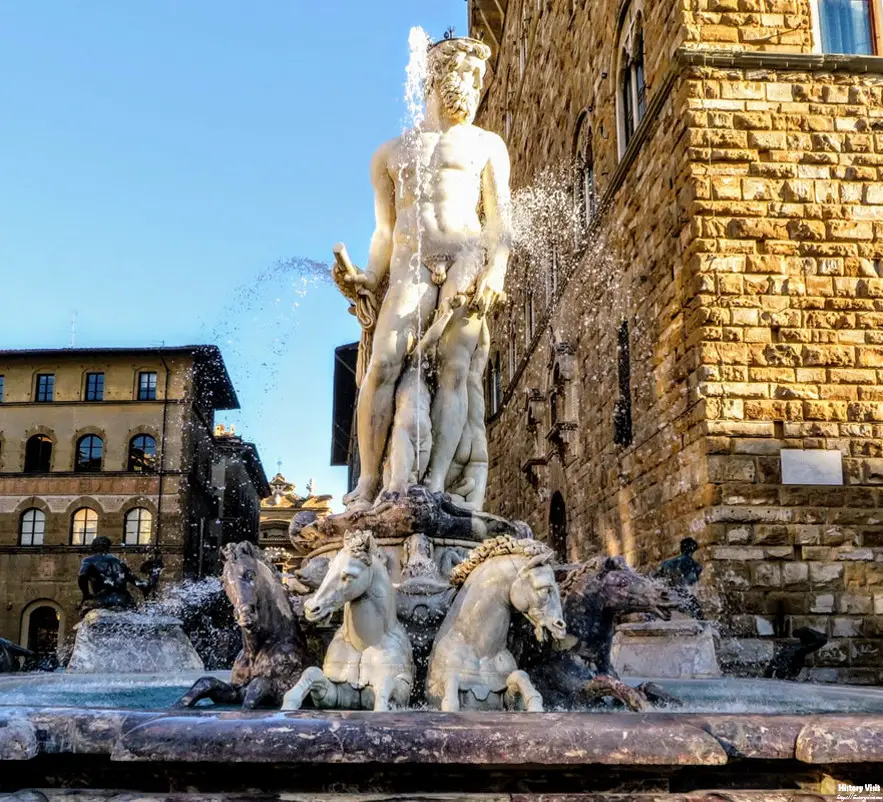
In addition to its aesthetic appeal, the Fountain of Neptune holds deep symbolic meaning. It represents the control of natural forces and the power of the sea. The figure of Neptune, with his trident, embodies the might and authority of the god. This article will delve into the details of the fountain’s design, the artistic techniques used, and the cultural context in which it was created.
Historical Background Of The Fountain
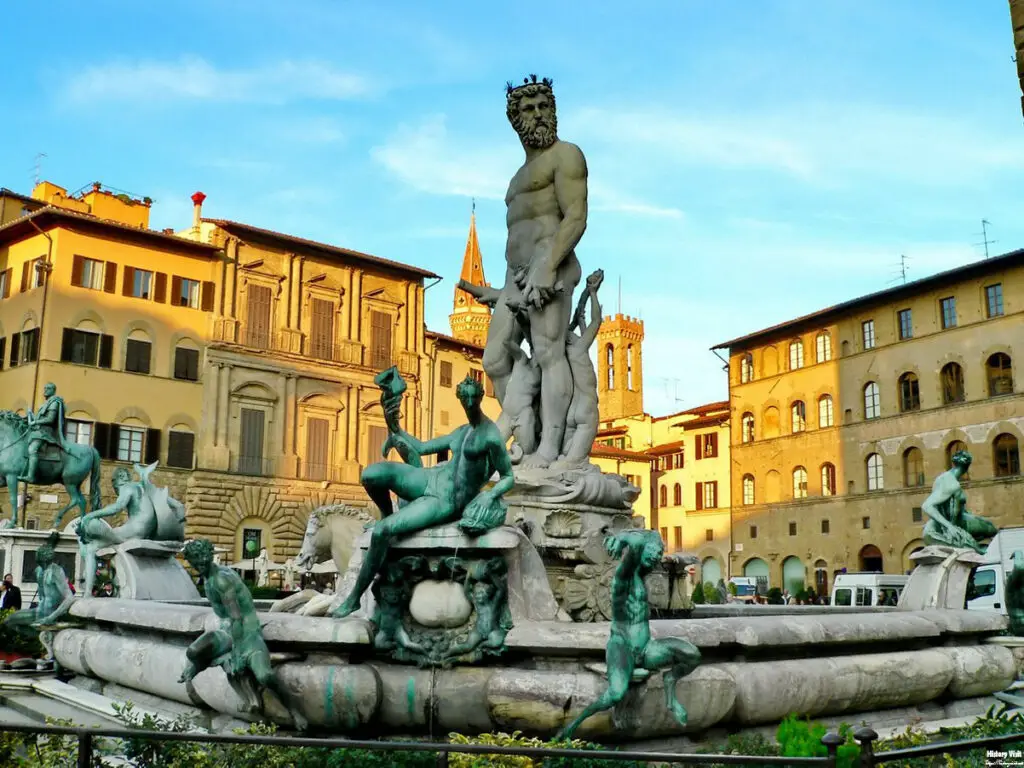
The Fountain of Neptune in Bologna was commissioned by Cardinal Charles Borromeo in 1563. It was part of a broader urban redevelopment plan aimed at showcasing the city’s prosperity. Giambologna, a renowned Flemish sculptor, was chosen to design and create This masterpiece. His work on the fountain cemented his reputation as one of the leading sculptors of his time.
Giambologna’s design for the fountain was influenced by classical Roman and Greek art. The figure of Neptune at the center of the fountain draws inspiration from ancient depictions of gods and heroes. The surrounding figures, including sea nymphs and cherubs, add to the classical aesthetic. These elements reflect the Renaissance fascination with antiquity and the revival of classical ideals.
The construction of the Fountain of Neptune took several years to complete. The intricate details and the use of high-quality materials required meticulous craftsmanship. In 1567, they unveiled the fountain to widespread acclaim. It quickly became a symbol of Bologna’s artistic and cultural heritage.
This place has undergone several restorations over the centuries. These efforts have ensured its preservation for future generations to appreciate. Today, the Fountain of Neptune remains a popular tourist attraction and a beloved landmark in Bologna. Its historical significance and artistic beauty continue to captivate visitors from around the world.
Artistic Elements
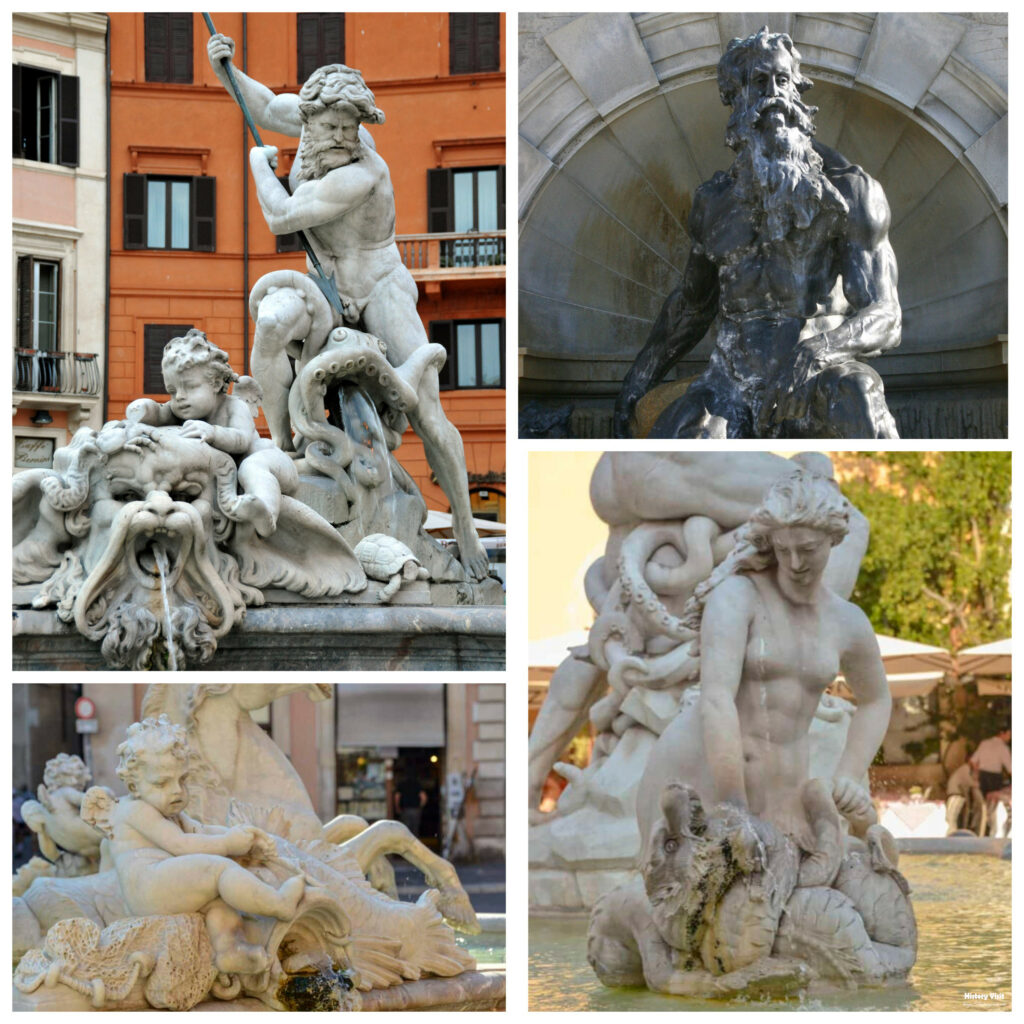
This is a masterpiece of Renaissance sculpture. The central figure of Neptune is a striking representation of the god of the sea. He stands with his trident, exuding power and authority. The details of his musculature and facial expression showcase Giambologna’s skill in capturing human anatomy and emotion.
Surrounding Neptune are a series of smaller figures that add to the fountain’s visual complexity. Four sea nymphs are positioned at the corners of the fountain, each holding a breast that spouts water. These figures symbolize the rivers of the four known continents of the time: Europe, Asia, Africa, and the Americas. Their dynamic poses and flowing drapery create a sense of movement and vitality.
At the base of the fountain, cherubs play with dolphins, adding a playful and whimsical element to the composition. The cherubs’ joyful expressions and the dolphins’ sleek forms contrast with Neptune’s imposing presence. This balance of serious and playful elements is a hallmark of Giambologna’s style.
The use of different materials also enhances the fountain’s visual appeal. The figures are crafted from bronze, while the base is made of marble. This combination of materials creates a striking contrast and highlights the intricate details of the sculpture. The patina on the bronze adds depth and texture, enhancing the overall effect of the fountain.
Symbolism of the Fountain
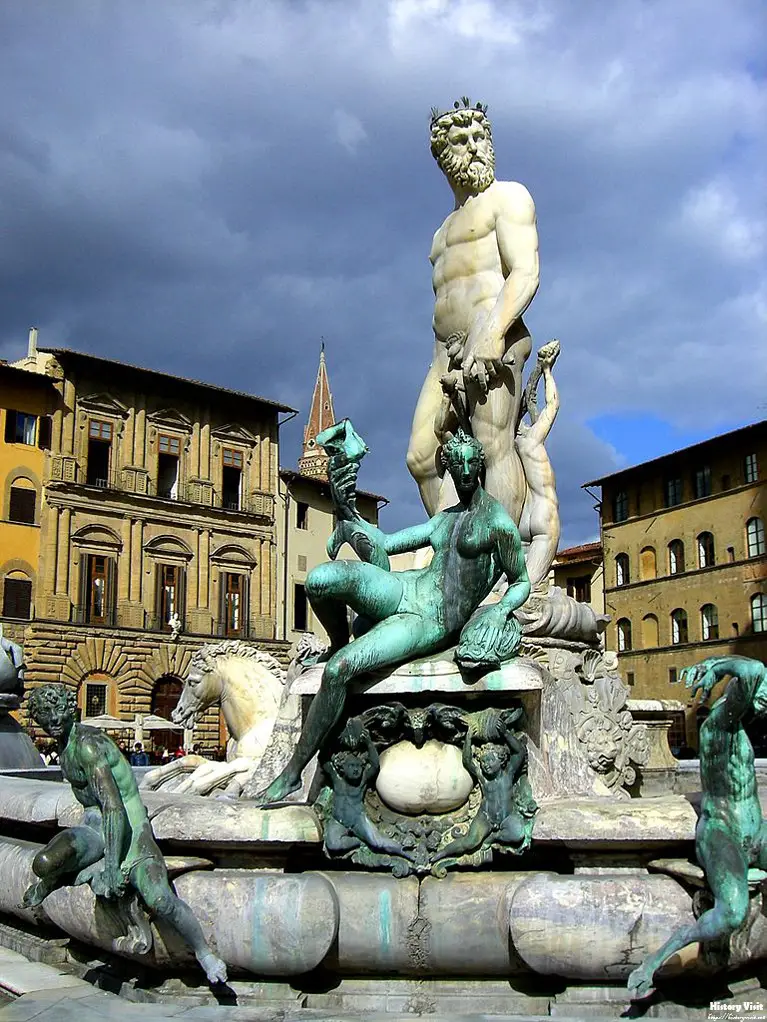
The Fountain of Neptune is rich in symbolism, reflecting both the power of the sea and the human desire to control it. Neptune, as the god of the sea, represents authority and dominance over the natural world. His trident, a symbol of his power, is a potent reminder of his ability to command the waters.
The sea nymphs and cherubs add layers of meaning to the fountain. The nymphs, representing the rivers of the world, signify the interconnectedness of different cultures and continents. Their presence highlights the importance of water as a life-giving force that unites humanity. The cherubs, with their playful interaction with the dolphins, symbolize the harmony between humans and nature.
The placement of the fountain in a public square also carries symbolic weight. It serves as a reminder of the city’s prosperity and the importance of civic pride. The fountain’s grandeur and beauty reflect the values of the Renaissance, emphasizing the pursuit of knowledge, art, and culture.
The combination of classical elements and Renaissance ideals makes the Fountain of Neptune a powerful symbol of human achievement. It celebrates the ability to harness and control natural forces while acknowledging the beauty and power of the natural world. This duality is a key aspect of the fountain’s enduring appeal.
Cultural Significance
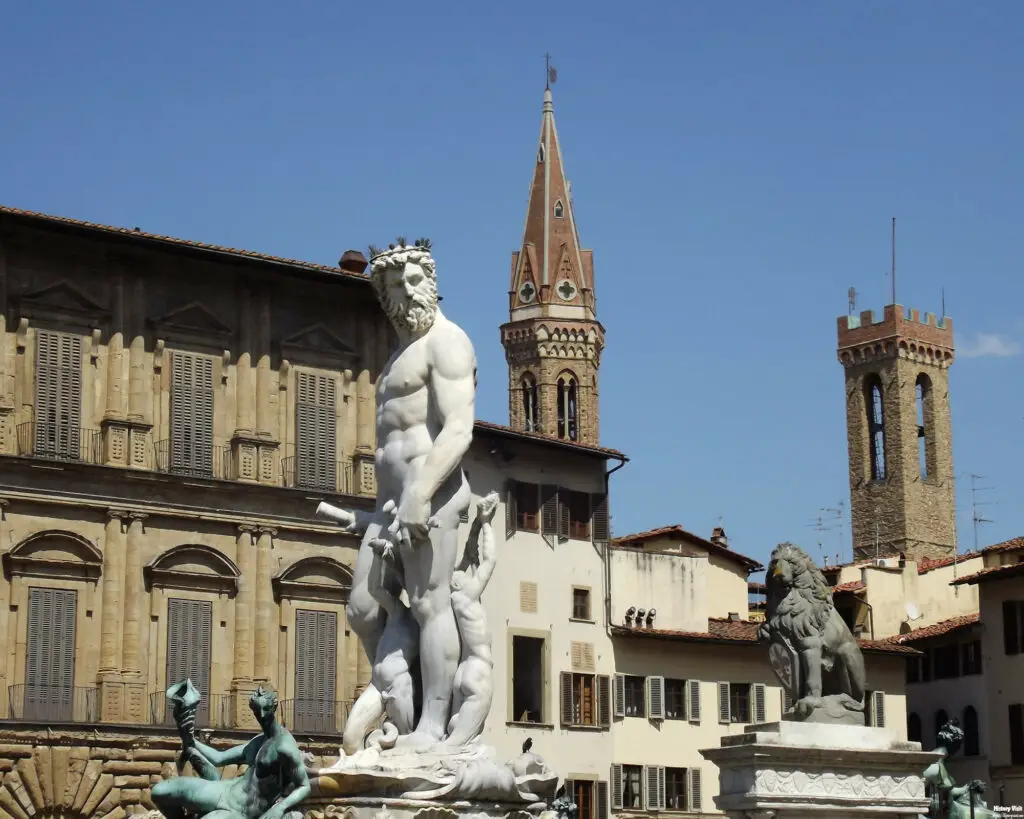
This Masterpiece holds a special place in the cultural heritage of Bologna. It has become an iconic symbol of the city, representing its rich history and artistic achievements. The fountain is a popular gathering spot for both locals and tourists, serving as a focal point for social and cultural activities.
Throughout its history, the fountain has been the subject of various legends and folklore. One popular legend suggests that Giambologna designed Neptune with disproportionately large genitals as a defiant gesture against the church’s censorship. This story, though likely apocryphal, adds to the mystique and allure of the fountain.
The fountain’s cultural significance extends beyond Bologna. It has inspired numerous artists and writers, who have drawn on its themes and symbolism in their own works. The figure of Neptune, in particular, has become a widely recognized symbol of strength and authority.
The preservation and restoration of the Fountain of Neptune are ongoing efforts. These initiatives ensure that the fountain remains a vibrant part of Bologna’s cultural landscape. The commitment to preserving this historic monument reflects the city’s dedication to honoring its artistic heritage.
Influence on Other Fountains
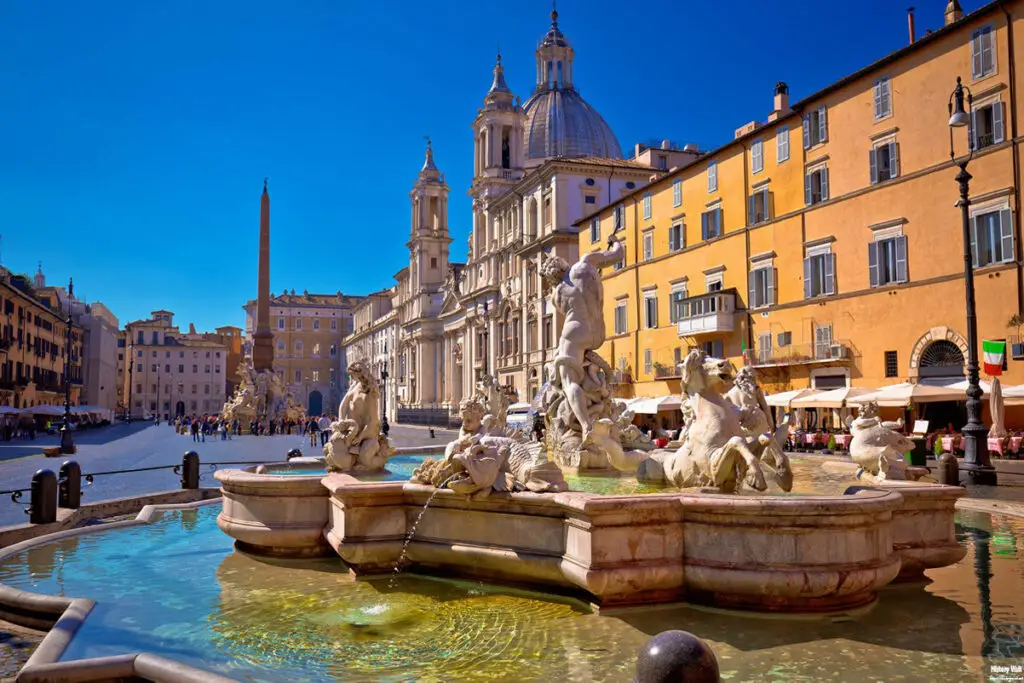
The design and symbolism of the Fountain of Neptune have influenced many other fountains around the world. The concept of a central figure surrounded by allegorical elements has become a common motif in public fountains. This design allows for a rich interplay of themes and visual elements, creating a dynamic and engaging work of art.
In Florence, Italy, the Fountain of Neptune in the Piazza della Signoria bears a striking resemblance to Giambologna’s design. Created by Bartolomeo Ammannati in the 16th century, this fountain features Neptune at the center, surrounded by mythological figures. The similarities between the two fountains highlight the enduring appeal of the Neptune motif.
In Rome, the Fountain of Neptune in Piazza Navona also draws inspiration from the Bologna fountain. Designed by Giacomo della Porta in the late 16th century, it features Neptune battling a sea monster, surrounded by tritons and nymphs. This Masterpiece adds a dramatic element to the Neptune theme, emphasizing the god’s power and heroism.
Outside Italy, the influence of the Fountain of Neptune can be seen in various public fountains in Europe and beyond. The use of allegorical figures, the central god-like figure, and the intricate detailing are elements that have been adopted and adapted by many artists. The Fountain of Neptune remains a touchstone for the design of public fountains, reflecting its lasting impact on the art world.
Fountain of Neptune Conclusion
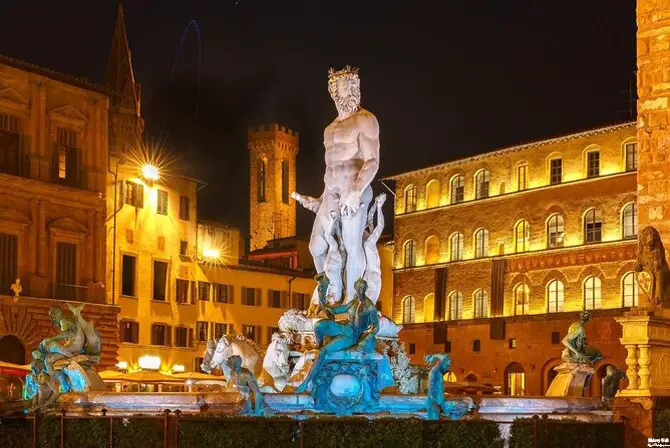
The Fountain of Neptune by Antonio Rossetti stands as a testament to the artistic and cultural achievements of the Renaissance. Its intricate design, rich symbolism, and historical significance make it a masterpiece of public art. The use of black and white marble adds to its visual and thematic depth, highlighting the eternal struggle between virtue and vice.
Rossetti’s attention to detail and his ability to convey complex narratives through sculpture are evident in this work. The contrast between the Vestal Virgin and the tempter creates a powerful and thought-provoking piece that continues to captivate viewers. This wonderful Masterpiece invites us to reflect on the nature of temptation and the strength required to resist it.
The preservation of this historic monument ensures that future generations can appreciate its beauty and significance. As we celebrate the Fountain of Neptune, we also celebrate the enduring relevance of classical art and the timeless themes it represents. Rossetti’s work reminds us of the power of sculpture to evoke profound emotional responses and convey complex narratives. The Fountain of Neptune remains a lasting tribute to his skill and vision.


